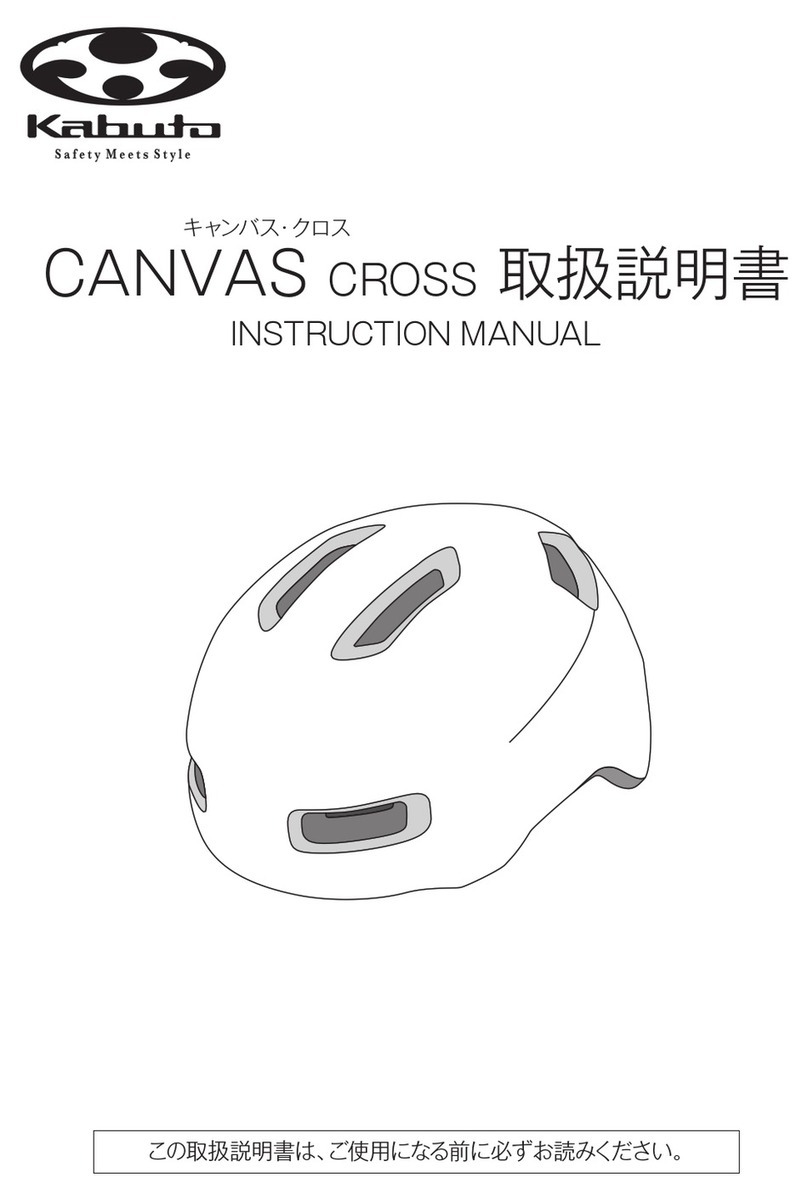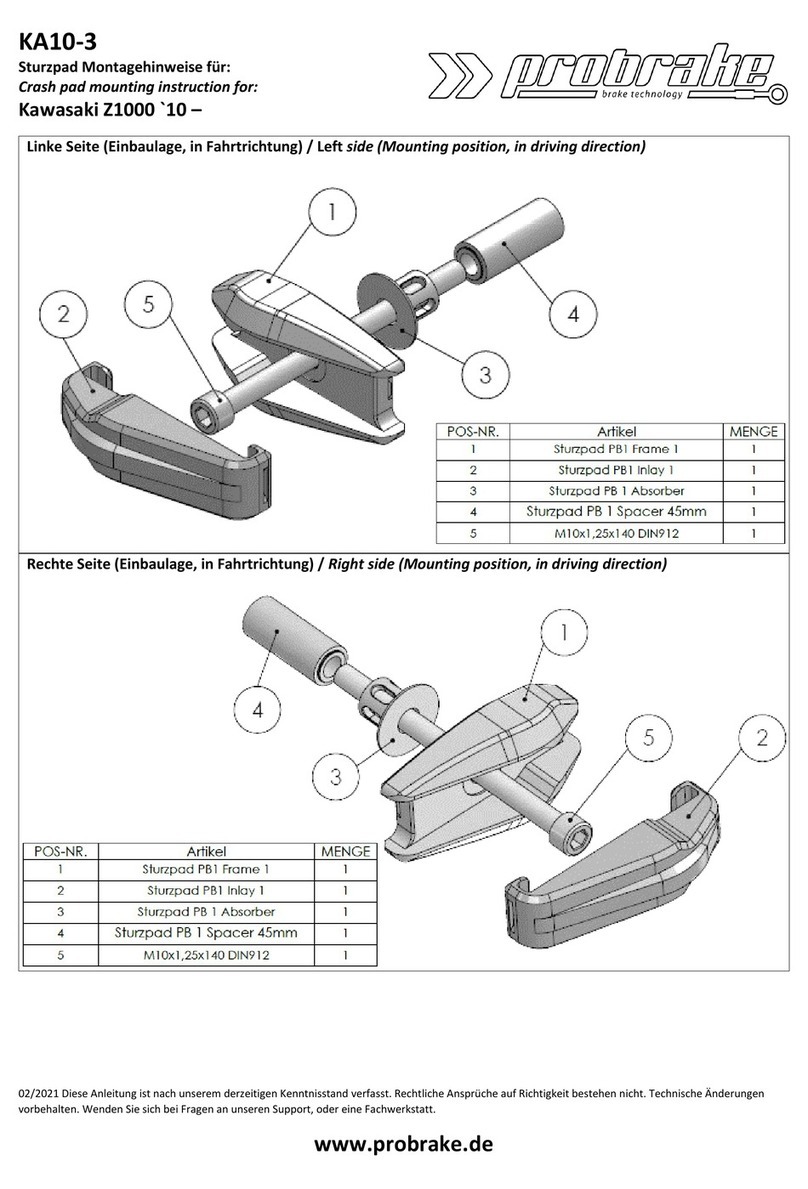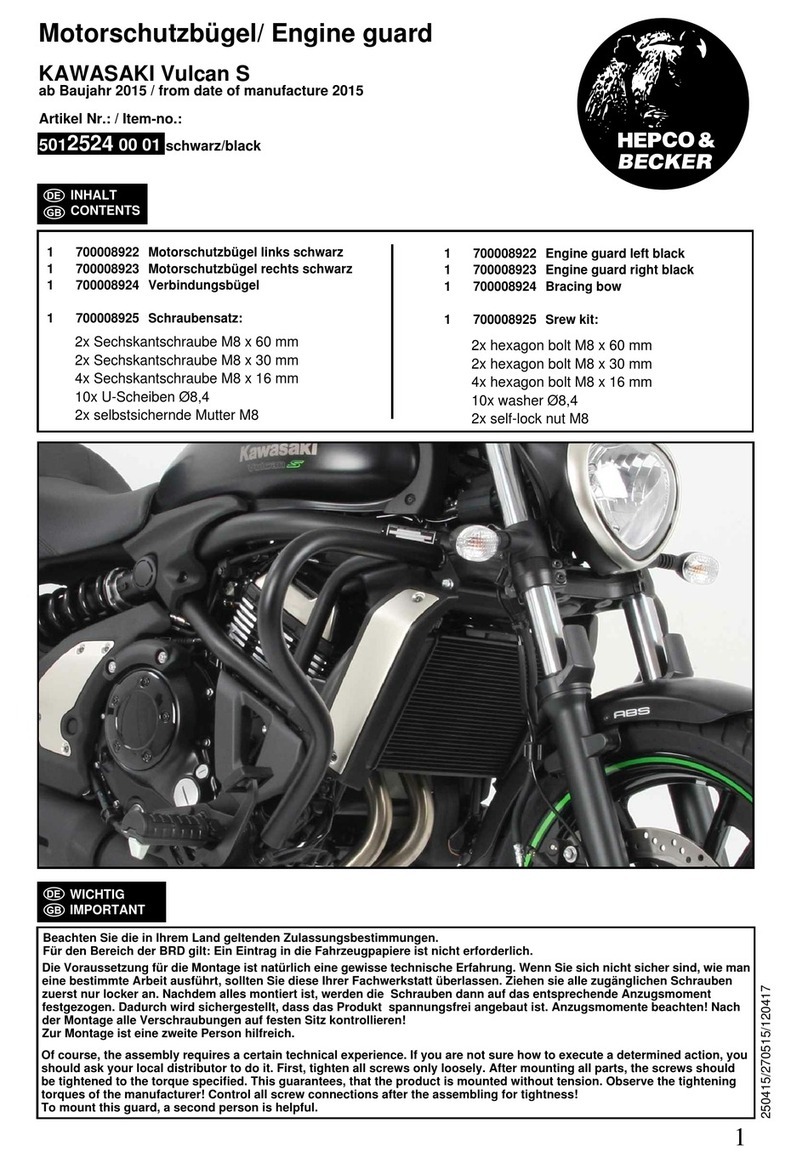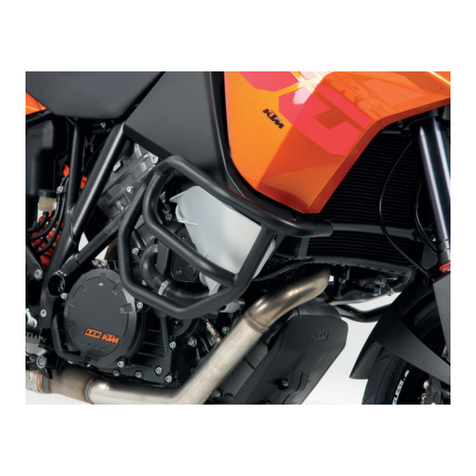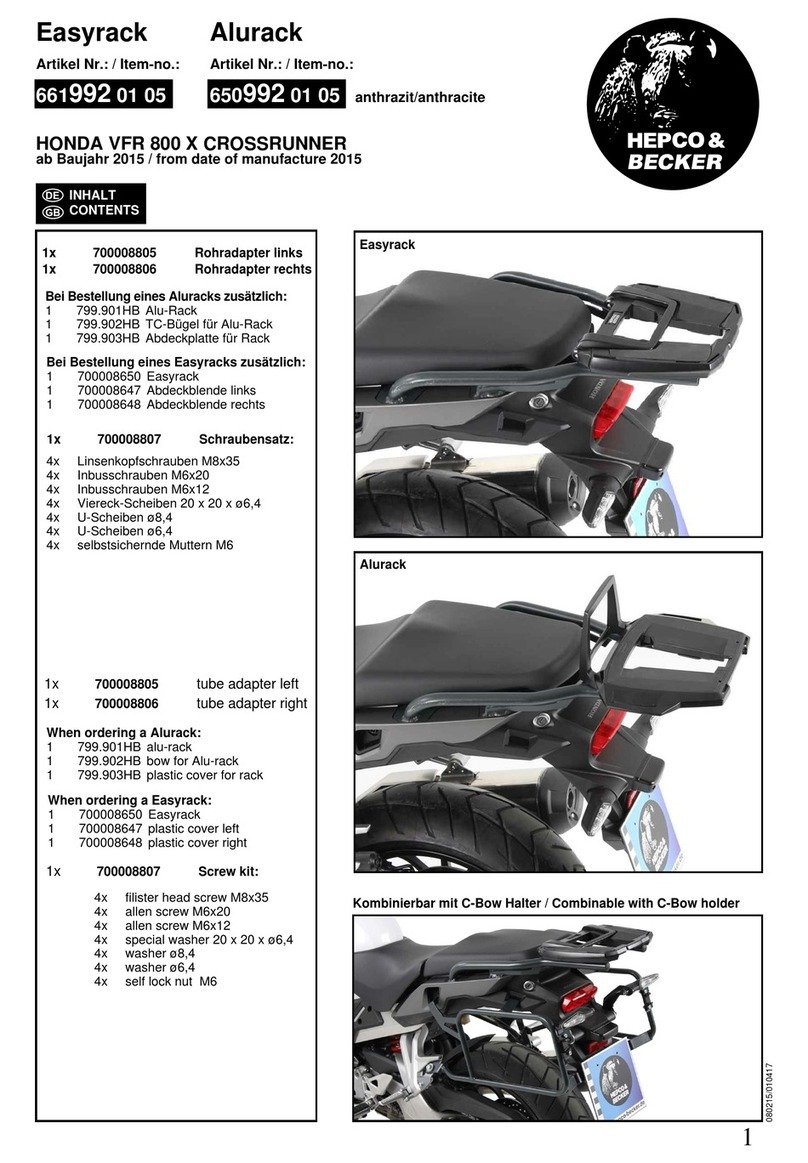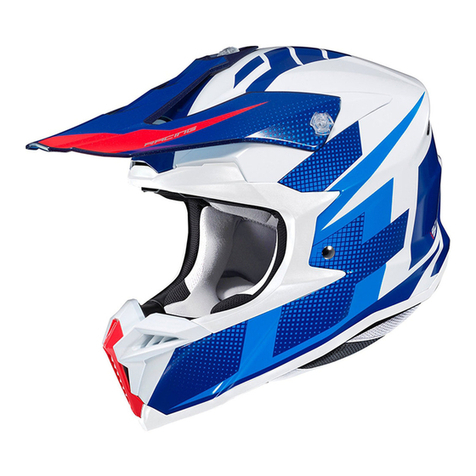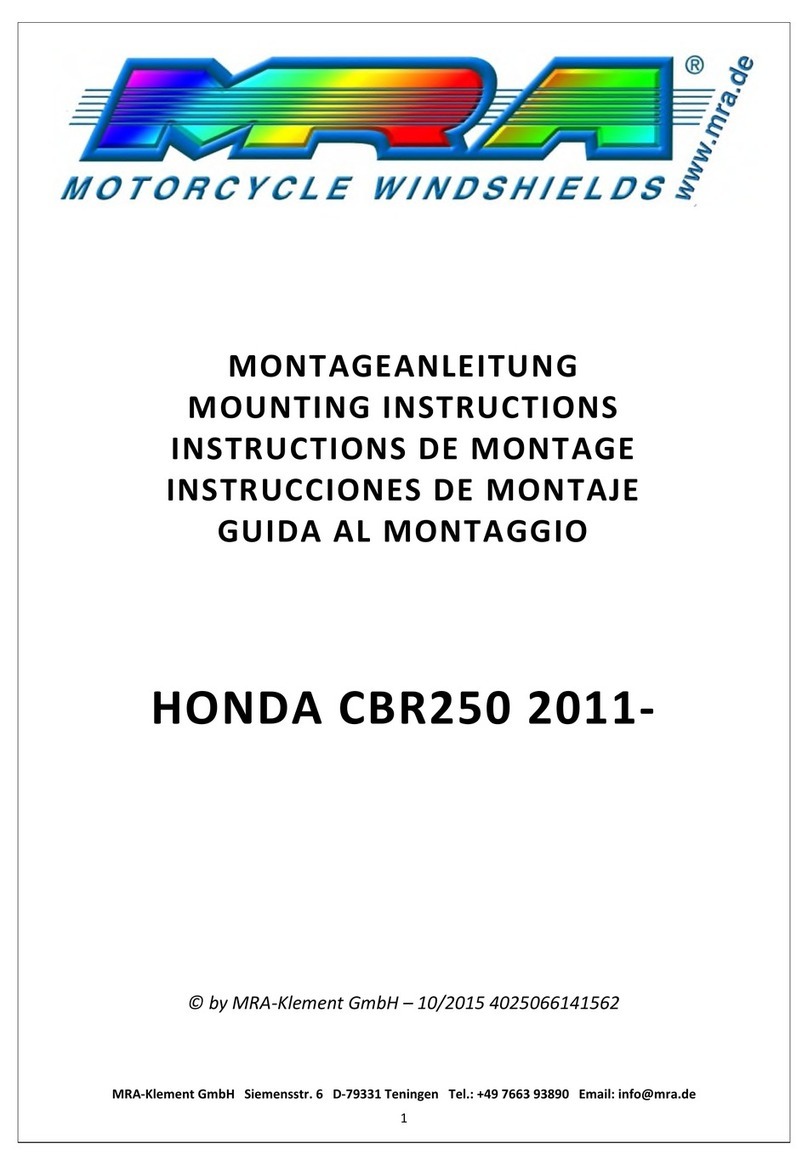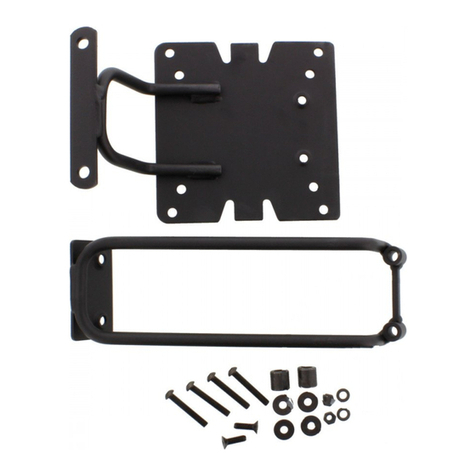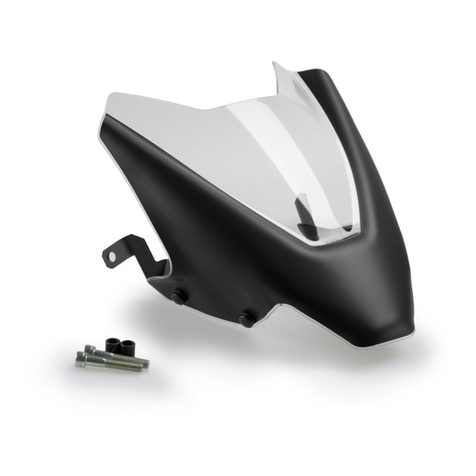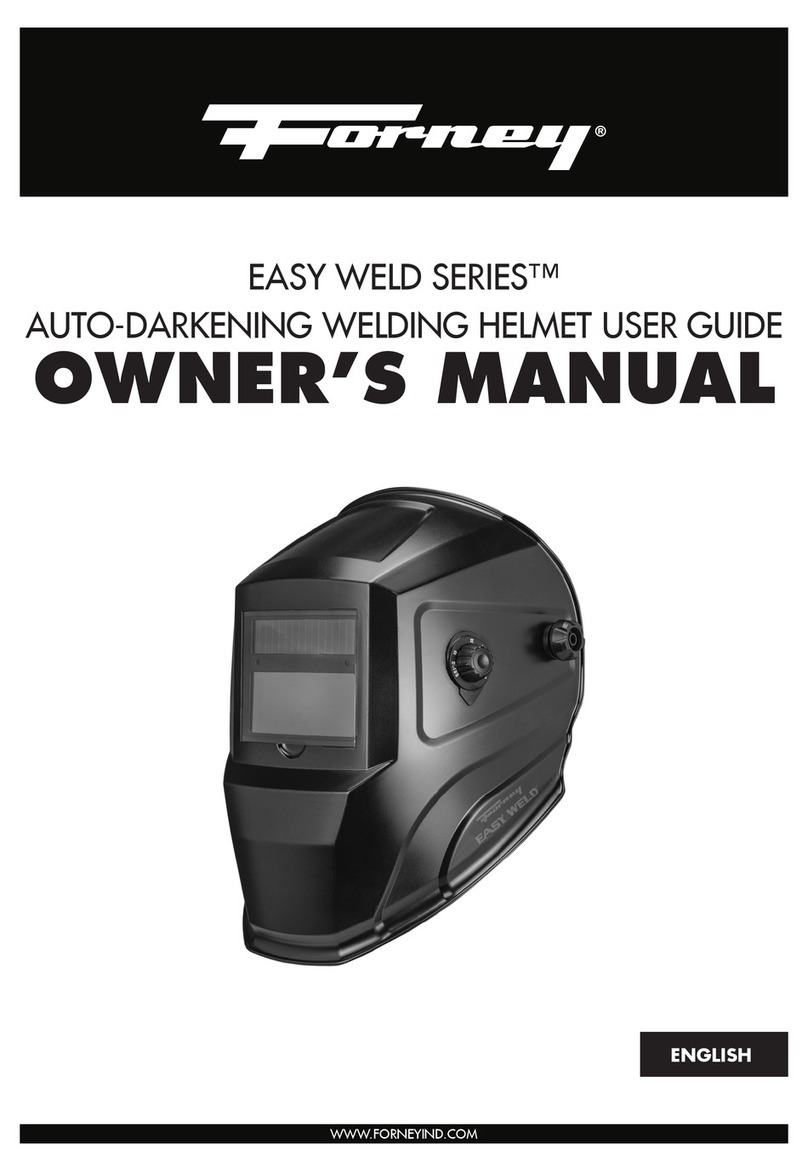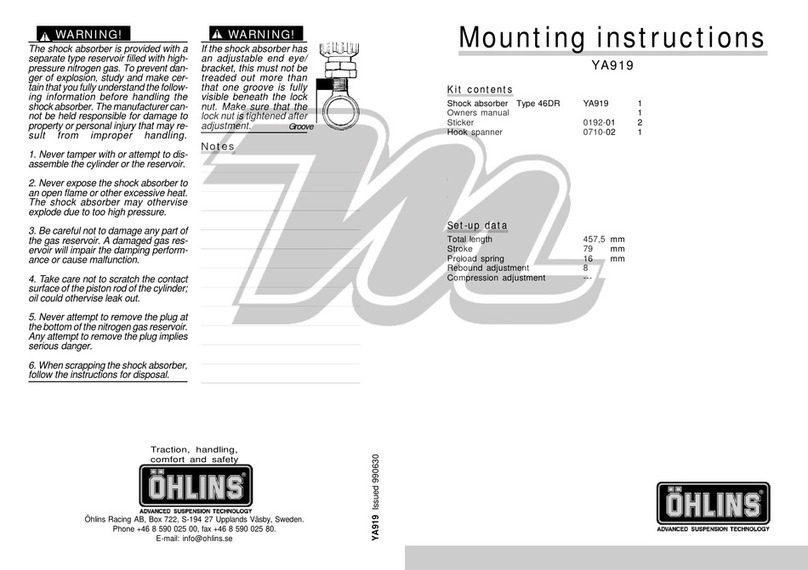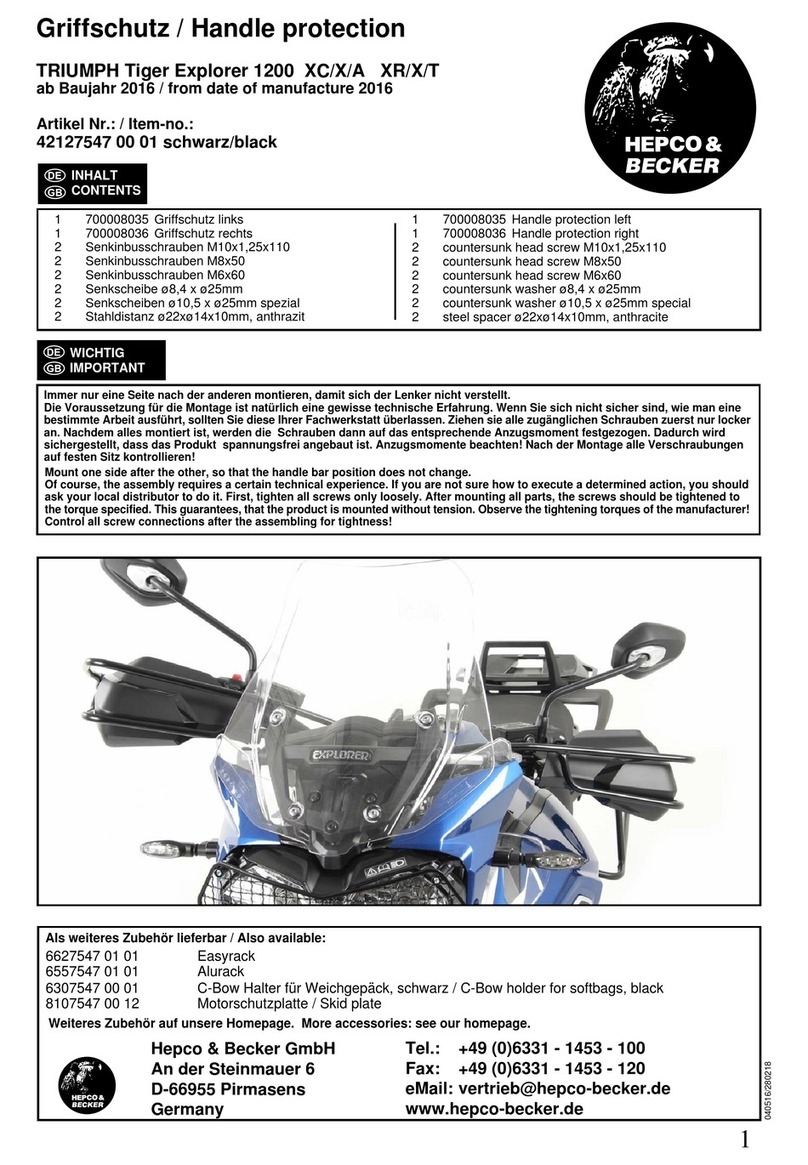Fastway 201742 User manual

de
ORIGINAL GEBRAUCHSANLEITUNG
en INSTRUCTIONS FOR USE
fr MODE D'EMPLOI
nl GEBRUIKSAANWIJZING
it ISTRUZIONI PER L'USO
es INSTRUCCIONES DE USO
ru
ИНСТРУКЦИЯ ПО ЭКСПЛУАТАЦИИ
pl INSTRUKCJA UŻYTKOWANIA

2
Liste der notifizierten Stellen
List of notified bodies | Liste des organismes notifiés | Lijst van
aangemelde instanties | Elenco degli organismi notificati | Lista de
los organismos notificados | Перечень нотифицированных органов |
Wykaz jednostek notyfikowanych
*(en) Notification number I (fr) Numéro de notification I (nl)
Notificatienummer I (it) Numero di notifica I (es) Número de notificación I
(ru) Номер нотификации I (pl) Numer notyfikacji
Prüfinstitut Notifizierungsnummer*
CTC Group
4, rue Hermann Frenkel
69367 Lyon cedex 07
Frankreich
0075
IDIADA AUTOMOTIVE
TECHNOLOGY S.A.
L’Albornar, PO Box 20
43710 SANTA OLIVIA
Spanien
0164
RICOTEST
Via Tione, 9
37010 - Pastrengo (VR)
Italien
0498
DOLOMITICERT s.c.ar.l.
Z.I. Villanova, 7/A
32013 Longarone (BL)
Italien
2008
TÜV Rheinland LGA Products GmbH
Tillystr. 2
D-90431 Nürnberg
Deutschland
0197
Centro Tessile Cotoniero e
Abbigliamento S.p.A. - Centrocot
Piazza St. Anna 2
21052 Busto Arsizio
Italien
0624
DGUV Test-, Prüf- und Zertifizierungsstelle
Fachbereich Persönliche Schutzausrüstung
Zwengenberger Strasse 68
42781 HAAN
Deutschland
0299

3
2
Gebrauchsanleitung
Inhaltsverzeichnis
1 | Allgemeines 4
1.1 | EU Anforderungen 4
1.2 | Allgemeine Leistungseigenschaften 5
2 | Sicherheit 6
2.1 | Bestimmungsgemäßer Gebrauch 6
2.2 | Beschränkung 6
3 | Anwendung 6
4 | Sachgerechte Nutzung 7
4.1 | Sicherheitsprüfung 7
4.2 | Kennzeichnung 8
4.3 | Haltbarkeit 8
4.4 | Materialinformation und
korrekte Reinigung 8
4.5 | Fachgerechte Lagerung/
Transport und Entsorgung 8
5 | Kontakt 9
Anhang:
Tabelle 1: Liste der notifizierten Stellen 2
Tabelle 2: Liste der Leistungsanforderungen 58
Tabelle 3: Maßtabellen 61
de

4
1 | Allgemeines
1.1 | EU Anforderungen
Die vorliegende Motorradbekleidung erfüllt die Grundanforderungen an
Sicherheit und Gesundheit der PSA-Verordnung (EU) 2016/425. Die
Konformität mit den Anforderungen dieser Verordnung wurde anhand einer
EG-Baumusterprüfung durch ein notifiziertes Prüfinstitut nachgewiesen.
Eine Liste der Prüfinstitute finden Sie auf der ersten Seite dieser
Gebrauchsanleitung.
Im produktspezifischen Teil dieser Anleitung finden Sie die Kennnummer,
welches Institut die EG-Baumusterprüfung für diese spezifische PSA
durchgeführt hat.
Die folgende Kennzeichnung ist an allen Jacken und Hosen für Motorradfahrer
im Straßenverkehr (im Folgenden Bekleidung genannt) angebracht und enthält
die beschriebenen Informationen:
Bitte lesen Sie die vorliegende Gebrauchsanleitung der Bekleidung
für Motorradfahrer im Straßenverkehr vor der Nutzung sorgfältig
durch, beachten Sie die genannten Hinweise und bewahren Sie diese An-
leitung bis zum Nutzungsende der Bekleidung auf.
Gebrauchsanleitung für Motorradjacken und
-hosen für nicht-professionelle Motorradfahrer
1Name der PSA
2Artikelnummer der PSA
3Spezielles Symbol zur
Kennzeichnung der PSA
für den Motorradfahrer
4Angabe der Leistungsklasse
5Europäische Norm
6Herstellerbestätigung der
Konformität mit der VO
(EU) 2016/425
7Hinweis auf
Informationsmaterial
Wichtiger Hinweis: Wir empfehlen die Kennzeichnung am Produkt zu
lassen, um die Konformität mit der gültigen europäischen Verordnung
nachweisen zu können.
Beispiel
Highway 1 „Name“
2XXXXX
1
2
3
4
5
7
6
A
FprEN17092-4
2019

5
4
Die Konformität mit dem Baumuster wird auf Grundlage interner
Fertigungskontrolle gewährleistet. Die EU-Konformitätserklärung ist online
unter www.louis.de direkt beim Produkt zu finden.
1.2 | Allgemeine Leistungseigenschaften
Die Prüfung der Bekleidung erfolgte gemäß der europäischen Normenreihe
FprEN17092: 2019. Die Normenreihe FprEN17092: 2019 unterscheidet die
folgenden Klassen/Typen von Motorradbekleidung:
AAA Schutzkleidung für höhere Belastungen
AA Schutzkleidung für mittlere Belastungen
A Schutzkleidung für geringe Belastungen
B Schutzkleidung für geringe Belastungen
durch Abrieb ohne Aufprallschutz
C Schutzkleidung für Aufprallschutz ohne Schutz gegen Abrieb
Die verschiedenen Leistungsklassen wurden definiert, um die Einführung von
zertifiziertem Schutz für eine möglichst große Zahl von Motorradfahrern zu
erreichen.
Der Grad des Risikos oder der Gefahr, dem bzw. der ein Motorradfahrer
ausgesetzt sein wird, steht in engem Zusammenhang mit der Art des Fahrens
und des Unfalls. Motorradfahrer werden darauf hingewiesen, dass sie die
Schutzkleidung für Motorradfahrer, die zu ihrer Fahraktivität und den Risiken
passt, sorgfältig auswählen müssen. Unter Umständen bieten andere
Kleidungsstücke oder Kombinationen von Kleidungsstücken, die gemäß der
Normenreihe FprEN 17092-1, FprEN 17092-2, FprEN 17092-3, FprEN 17092-4,
FprEN 17092-5 oder FprEN 17092-6 zertifiziert wurden, angemesseneren
Schutz als dieses Kleidungsstück, allerdings können mit ihrer Verwendung
Gewichts-, Ergonomie- (z. B. Einschränkungen der Bewegungsfreiheit) oder
Wärmebelastungen verbunden sein, die für einige Fahrer nicht akzeptabel
sind.
Dieses PSA-Kleidungsstück ist dazu ausgelegt, in heißen Umgebungen
Schutz zu bieten, was üblicherweise die Verwendung von leichten Materialien
erforderlich macht. Unter Umständen können andere Kleidungsstücke
oder Kombinationen von Kleidungsstücken, die gemäß der Normenreihe
FprEN 17092-1, FprEN 17092-2, FprEN 17092-3, FprEN 17092-4, FprEN
17092-5 oder FprEN 17092-6 zertifiziert wurden, mehr Schutz als dieses
Kleidungsstück bieten, allerdings kann mit ihrer Verwendung in heißen
Umgebungen eine nicht akzeptable Wärmebelastung verbunden sein.
Eine Übersicht der Anforderungen für die jeweiligen Klassen finden Sie in
Tabelle 2 am Ende dieser Gebrauchsanleitung.
Die Einstufung der Gesamtleistung richtet sich nach dem geringsten
Ergebnis aus allen erforderlichen Tests. Im style-spezifischen Teil der
Gebrauchsanweisung finden Sie eine Übersicht der erreichten Leistungen der
vorliegenden PSA.

6
2 | Sicherheit
2.1 | Bestimmungsgemäßer Gebrauch
Die in diesem Informationsblatt beschriebene Bekleidung ist für die
Benutzung beim Motorradfahren im Straßenverkehr vorgesehen.
Die Bekleidung kann vor Witterungseinflüssen schützen, ohne die
Bewegungsfreiheit des Trägers unnötig einzuschränken. Zusätzlich kann
die Bekleidung im Falle eines Sturzes den Körper des Trägers bis zu einem
gewissen Grad vor mechanischen Einflüssen schützen.
Die besonderen Gefahren bei Motorradunfällen stellen einerseits Stürze
mit dem Motorrad und andererseits Kollisionen mit anderen Fahrzeugen
oder mit festen Objekten am Straßenrand dar. Zudem bergen mechanische
Beanspruchung und Abschürfungen durch Stürze Verletzungsgefahren.
2.2 | Beschränkung
Diese Bekleidung bietet keinen Schutz vor Chemikalien, extremer Hitze,
offenem Feuer, extrem niedrigen Temperaturen oder anderen Risiken und
Gefahren, die nicht in dieser Gebrauchsanleitung erwähnt sind.
Keine persönliche Schutzausrüstung (PSA) kann unbegrenzten Schutz gegen
die Risiken eines Sturzes oder Unfalls bieten und Verletzungen des Körpers
hundertprozentig ausschließen. Motorradfahren ist grundsätzlich eine
gefährliche Aktivität und die Verwendung dieser PSA kann nicht garantieren,
dass schwere Personenschäden verhindert werden.
3 | Anwendung
Anhand ihrer Körpermaße können Sie die
richtige Größe der Bekleidung wählen. Sie
finden die entsprechenden Körpermaße auf
unserer Internetseite www.louis.de und in
Tabelle 3 am Ende dieser Gebrauchsanleitung.
Falls Sie Fragen haben, beraten wir Sie auch
gern in unseren Filialen.
Die Bekleidung muss bequem aber enganliegend
an den Körper angezogen werden.
Bitte schliessen Sie alle Reißverschlüsse,
Knöpfe oder Klettverschlüsse sorgfältig. Die Weite der Bekleidung kann
mit Hilfe der vorhandene/n Weitenverstellung/en an den Körper angepasst
werden und muss entsprechend fest und sicher angezogen werden.
Am Besten prüft man den Sitz der Bekleidung auf dem Motorrad. Die
Bekleidung sollte enganliegend sitzen, aber an keiner Stelle des Körpers
einen unangenehmen Druck verursachen. Wählen Sie die Bekleidung nicht zu
groß oder zu klein aus, sodass die Schutzkleidung weder verrutschen noch
Druckstellen am Körper verursachen kann.
Die vorhandenen Protektoren müssen genau über den zu schützenden
Stellen fest anliegen. Wenn nötig müssen die verstellbaren Protektoren in
der Höhe verstellt werden. Dieses kann durch die Klettverschlüsse in den
Protektorentaschen und an den Protektoren erreicht werden.
Im style-spezifischen Teil dieser Anleitung finden Sie eine Übersicht
der Protektoren, die in der Bekleidung enthalten bzw. nachrüstbar sind.
Informationen über die passenden Nachrüstprotektoren sind auf den Labels
91–95
98–101
180–186

7
6
an den Protektorentaschen zu finden. Bitte statten Sie ihre Bekleidung mit
den genannten Nachrüstprotektoren aus, um an allen Stellen des Körpers
umfassenden Aufprallschutz im Falle eines Unfalls zu haben.
Benutzen Sie die vorliegende PSA nicht ohne die herausnehmbaren
Protektoren und stellen Sie sicher, dass diese an der richtigen Position
sitzen, bevor Sie die Bekleidung auf dem Motorrad tragen. Nur mit korrekt
installierten Protektoren kann die Bekleidung ihre volle Schutzleistung
erbringen.
Die Bekleidung ist mit einem Verbindungsreißverschluss ausgestattet.
Bitte benutzen Sie diesen um Jacke und Hose beim Fahren miteinander
zu verbinden. So verhindern Sie das auseinanderrutschen der beiden
Bekleidungsteile und ihr Körper ist rundherum geschützt.
Bitte achten Sie beim Kauf auch darauf, dass der Jackenärmel ober- oder
unterhalb der Handschuhstulpe getragen werden kann und beide Teile
wenigstens 15mm überlappen.
Die Hosen sollten beim Sitzen auf dem Motorrad den Schaft der Schuhe
überdecken, damit auch hier der gesamte Körper geschützt wird.
Bitte bedenken Sie, dass beim Motorradfahren der gesamte Körper geschützt
werden muss und tragen Sie entsprechende Ausrüstung von Kopf bis Fuß
(Helm, Jacke, Hose, Handschuhe gemäß EN 13594 und Stiefel gemäß
13634).
4 | Sachgerechte Nutzung
4.1 | Sicherheitsprüfung
Folgende Hinweise sind unbedingt zu beachten, denn nur dadurch kann die
ursprüngliche Schutzleistung der Bekleidung gewährleistet werden:
Verwenden Sie zur Reinigung niemals Lösungsmittel oder andere aggressive
Substanzen. Eine Verunreinigung mit nicht zulässigen Substanzen oder
eine nicht ordnungsgemäße Pflege kann die Eigenschaften erheblich
beeinträchtigen und die Schutzleistung der Bekleidung verringern.
Die Bekleidung sollte weder zu hohen noch zu niedrigen Temperaturen
ausgesetzt werden.
Die Bekleidung darf nicht gefärbt oder mit Aufklebern oder Aufnähern
verändert werden. Generell sind Änderungen an dem Produkt, so gering sie
auch sein mögen, untersagt. Falsche Behandlungen des Produktes, wie oben
beschrieben, können zu verringerter Schutzleistung führen. Im schlimmsten
Fall wird die Bekleidung unbrauchbar.
Bei unsachgemäßer Behandlung weist die Detlev Louis Motorrad-
Vertriebsgesellschaft mbH (Schweiz: Detlev Louis AG) Regress- oder
Reparaturansprüche zurück.
Vor jeder Anwendung sollte die Bekleidung auf Löcher, offene Nähte o.ä.
untersucht werden. Wenn Sie eine Beschädigung an der Bekleidung
feststellen, müssen Sie sie ersetzen.
Prüfen Sie auch die Protektoren auf Beschädigungen und stellen Sie sicher,
dass diese sicher befestigt sind. Wenn die Bekleidung oder Teile davon erste
Verschleißerscheinungen aufweisen, ersetzen Sie sie umgehend.
Bei einem Sturz oder Unfall können wichtige Komponenten der Bekleidung

8
beschädigt werden, so dass sie nicht mehr den oben beschriebenen
eingeschränkten Schutz bieten können. Es kann sich um Beschädigungen
handeln, die mit dem bloßen Auge nicht erkennbar sind. Ersetzen Sie die
Bekleidung daher nach jedem Sturz.
4.2 | Kennzeichnung
Zur eindeutigen Identifizierung und Rückverfolgung ist die Bekleidung mit
einem Produktionslabel ausgestattet.
Herstellungsdatum
Produzenten-/Ordernummer
Herstellungsland
Bestellnummer
4.3 | Haltbarkeit
Die Haltbarkeit der Bekleidung ist abhängig von der Art und Dauer des
Gebrauchs und der angewandten Pflege. Es können Beschädigungen
vorliegen, die nicht immer durch eine einfache Sichtprüfung festzustellen
sind. Grundsätzlich muss diese PSA 8 Jahre nach Herstellungsdatum ersetzt
werden, auch wenn sie nicht beschädigt wurde.
4.4 | Materialinformationen und korrekte Reinigung
Die Materialzusammensetzung ihrer Bekleidung finden Sie auf den
Informationslabeln in ihrer Schutzkleidung oder im Internet unter www.louis.
de.
Die Bekleidung sollte in regelmäßigen Abständen mit entsprechenden
Pflegemitteln gereinigt werden. Verwenden Sie zur Reinigung niemals
Lösungsmittel oder andere aggressive Substanzen. Bitte beachten Sie die
Pflegehinweise auf den eingenähten Informationslabeln.
Weitere Pflegehinweise finden Sie auf unserer Website: www.louis.de
4.5 | Fachgerechte Lagerung/Transport und Entsorgung
Bewahren Sie die Bekleidung an einem trockenen und gut belüfteten Ort auf
und setzen Sie sie nicht dem Sonnenlicht oder direkter Wärmestrahlung aus.
Stellen Sie sicher, dass die Bekleidung nicht durch Knicken, Schläge,
Herunterfallen oder andere Stoßeinwirkungen beschädigt werden können
und nicht unter schweren Gegenständen gelagert werden. Lagern Sie die
Bekleidung niemals so, dass ihr Gewicht nur von einigen einzelnen Punkten
getragen wird.
Best.Nr. 201234
xx-xxxx
1234/01234
XXX

9
8
Wurde die Bekleidung gebraucht, muss man diese bei Raumtemperatur an
der Luft trocknen lassen. Föne o. ä. dürfen nicht verwendet werden, auch das
direkte Auflegen auf einem Heizkörper kann schädlich sein.
Lassen Sie die Bekleidung beim Transport nicht für längere Zeit in einem
geschlossenen Fahrzeug liegen und setzen Sie sie keinen sehr hohen oder
sehr niedrigen Temperaturen aus.
Stellen Sie sicher, dass sich die Bekleidung beim Transport nicht unter
schweren Gegenständen befindet.
Die Bekleidung wurde mit ausgesuchten Materialien produziert, die nach
heutigem Wissensstand für den Menschen als ungefährlich eingestuft
werden.
Entsorgen Sie die Bekleidung am Ende der Nutzungsdauer gemäß den
örtlichen Entsorgungsvorschriften.
5 | Kontakt
Bei Fragen zum Produkt und/oder dieser Anleitung kontaktieren Sie vor dem
ersten Gebrauch des Produktes unser Servicecenter unter der
wir gemeinsam, dass das Produkt korrekt benutzt wird.

10
Instructions for use
Table of contents
1 | General information 11
1.1 | EU requirements 11
1.2 | General performance features 12
2 | Safety 12
2.1 | Intended use 12
2.2 | Restrictions 13
3 | How to use 13
4 | Correct use 14
4.1 | Safety checks 14
4.2 | Label 14
4.3 | Durability 15
4.4 | Information on the material
and correct cleaning 15
4.5 | Correct storage,
transport and disposal 15
5 | Contact 15
Annexes:
Table 1: List of Notified Bodies 2
Table 2: List of Requirements 58
Table 3: Sizing 61
en

11
10
1. General requirements
1.1 EU requirements
These garments for motorcycle riders fulfill the basic requirements of Safety
and Health of the PPE Regulation 2016/425.
Conformity with the requirements set down in this regulation has been proven
by means of an EU type examination performed by a notified body. You will
find a list of notified bodies on the first page of these instructions for use.
In the product-specific section of this user information you will find the
identification number of the institute that performed the EU type examination
for this specific PPE.
The following label is affixed to all protective garments for motorcycle riders
in road traffic (hereinafter referred to as “garments”) and contains the
information described:
Conformity with the type test is ensured based on internal production control.
Please read these instructions for use for protective clothing for
motorcycle riders in on-road traffic carefully before use, follow the
notes mentioned, and keep these instructions safe until the end of use.
Instructions for use – motorcycle jackets and
pants for non-professional motorcycle riders
1Trade name of PPE
2item number of PPE
3Specific symbol indicating
use of the garments when
riding a motorcycle
4Performance class
5European standard
6Manufacturer’s declaration
of conformity with Regulation
(EU) 2016/425
7Reference to information
material
Important note: We recommend leaving the label on the product to be
able to prove conformity with the applicable European regulation.
Highway 1 „Name“
2XXXXX
1
2
3
4
5
7
6
A
FprEN17092-4
2019
Example

12
The EU Declaration of Conformity can be found online on the specific product
page of the website www.louis-moto.co.uk.
1.2. General performance features
The garments were tested in accordance with the European standard
FprEN17092: 2019. The standard FprEN17092: 2019 classified the
following classes of motorcycle garments:
AAA Protective garments for higher requirements
AA Protective garments for medium requirements
A Protective garments for lower requirements
B Protective garments for lower requirements against abrasion
and without impact Protection
C Protective garments for impact protection but without abrasion
protection
The different classes of protection have been introduced to make sure that
certified protective motorcycle clothing is suitable for as many motorcycle
riders as possible. The degree of risk or hazard that a motorcyclist will face
is closely linked to the type of riding and the nature of the accident. Riders
are cautioned to carefully choose motorcyclists’ protective garments that
match their riding activity and risks. Other garments or garment combinations
certified according to the series of standards FprEN 17092-1, FprEN 17092-2,
FprEN 17092-3, FprEN 17092-4, FprEN 17092-5, or FprEN 17092-6 may
provide more appropriate protection than this garment but there may be
weight or ergonomic (e. g. range of motion restrictions) or heat stress
penalties associated with their use, that may be less appropriate for some
riders‘ activities. This PPE garment is designed to provide protection in hot
environments, which generally requires the use of lighter materials. Other
garments or garment combinations certified according to the series of
standards FprEN 17092-1, FprEN 17092-2, FprEN 17092-3, FprEN 17092-4,
FprEN 17092-5, or FprEN 17092-6 may provide more protection than
this garment although they may result in unacceptable heat stress in hot
environments.
An overview about the requirements for the different classes can be found in
table 2 at the end of this user information.
The overall performance is classified based on the lowest result from all the
required tests.
The performance classes achieved in the individual tests are listed in the
product-specific section within this user information.
2 | Safety
2.1 | Intended use
The garments described in this information for use are made to be worn when
riding motorcycles in on-road traffic.
The garments can protect against weather conditions, without restricting the
wearer‘s freedom of movement unnecessarily. In addition, the garments can
provide a certain degree of mechanical protection to the wearer’s body in the
event of an accident.
The particular hazards associated with motorcycle accidents consist, on the

13
12
one hand, of falling off the motorcycle and, on the other hand, collisions with
other vehicles or solid objects at the roadside. In addition, mechanical forces
and grazing as a result of landing on the ground pose a risk of injury.
2.2 | Restrictions
The garments do not protect against chemicals, extreme heat, naked
flames, extremely low temperatures or other risks and hazards that are not
mentioned in these instructions for use.
No personal protective equipment (PPE) can offer indefinite protection against
the risks associated with a fall or accident. No garment can completely rule
out injury to the body. Riding motorcycles is a dangerous activity in general,
and the use of this PPE cannot guarantee that severe personal injuries will
be prevented.
3 | How to use
Your body measurements will help you to
find the correct size of the clothing. The
corresponding body measurements
can be found online on the specific product
page of the website www.louis-moto.co.uk and
at the end of this user information.
If you meet question please do not hesitate to
come into our shops.
Choose your garments size so that it is comfortable
but close-fitting. Please close all zippers, buttons
and Velcro fasteners carefully. The width can be adjusted with the available
adjustment systems and should be used to make the garment fit your body
perfectly. Please secure and tighten them properly.
It is best to check the fit of the garments by sitting on your motorcycle. The
garments should be close-fitting without causing any uncomfortable pressure
points on your body. Please choose the clothing neither too big nor too small
to avoid it moving freely or causing pressure somewhere on your body.
The available protectors must sit tightly and precisely over the areas to be
protected. If necessary, the position of the height-adjustable protectors
must be adjusted. This can be done while using the Velcro fasteners at the
protectors and in the protector pockets.
In the style-specific part of this user information you can find an overview
about the incorporated and retro-fitting protectors. Information regarding the
retro-fitting protectors can be found on the labels attached on the protector
pockets. Please install all protectors available for the garment to get an
overall impact protection on all areas of your body.
Do not use this PPE without the removable protectors and make sure they are
placed in the correct position before wearing the garments on the motorcycle.
Only with correctly installed protectors can the PPE provide its full protection.
The garments come with connection zippers. Please use them to connect
jackets and pants with each other while driving. This is to make sure there
won´t be an opening between these two pieces and your body is protected
all over. In addition please check that your jacket cuffs can be worn over
91–95
98–101
180–186

14
or underneath your gloves cuffs and that both have an overlap of at least
15mm. The pants should overlap the bootlegs to make sure the body is also
properly protected in this area.
Please keep in mind that the entire body must be protected when riding
motorcycles, and that you should always wear the appropriate equipment
from head to toe (helmet, jacket, trousers, gloves according to EN 13594 and
boots according to EN 13634).
4 | Correct Use
4.1 | Safety checks
It is essential that the following instructions be observed, as this is the
only way to ensure that the original protective capacity of the garment is
maintained.
Never use solvents or other aggressive substances for cleaning.
Contact with unapproved substances or incorrect care of the clothing may
significantly affect their features and reduce the protection they provide.
The garment should not be exposed to high or low temperatures.
The clothing must not be dyed, nor may adhesive labels be attached. No
modifications to the product, however small they may seem, are permitted.
Such incorrect treatment as mentioned above may result in reduced
protection. At worst, the clothing may become ineffective.
Detlev Louis Motorrad-Vertriebsgesellschaft mbH (Switzerland: Detlev Louis
AG) cannot accept any claims for compensation or for repair resulting from
incorrect treatment.
The garment should be checked for holes, tears, seams coming unstitched
etc., every time they are worn.
If you notice any damage to the garment, you must replace it.
Also check that the protectors are undamaged and securely attached to the
garment. Check that the hook-and-loop fasteners are clean and function
properly and securely.
As soon as your clothing or parts of the clothing start to show signs of wear,
it is time to replace it.
A fall and/or crash may damage important components of the garment, so it
will no longer provide the limited protection described above. Such damage
may not be visible to the naked eye. You should therefore always replace your
garment after a fall.
4.2 | Label
The garments come with a production label for clear identification and
traceability.
Date of manufacture
Manufacturer number/order number
Country of manufacture
xx-xxxx
1234/01234
XXX

15
14
Item number
4.3 | Durability
The durability of the clothing depends on the type and duration of use, and
the degree of care. Some forms of damage are not always recognisable by
simple visual inspection. As a general principle, this PPE must be replaced
eight years from the date of manufacture, even if it does not appear to be
damaged.
4.4 | Information on the material and correct cleaning
The material composition of your clothing can be found on the information
labels in your clothing or on our website: www.louis-moto.co.uk
The clothing should be cleaned regularly with a suitable care product. Never
use solvents or other aggressive substances for cleaning.
Please observe the care instructions on the information label sewn into the
clothing.
You will find more care instructions on our website: www.louis-moto.co.uk
4.5 | Correct storage, transport and disposal
The clothing must be stored in a dry and well-ventilated place. Do not expose
it to sunlight or direct heat sources.
Ensure that the clothing cannot be damaged by kinking, knocks, falling or
other impacts, and you should not place heavy objects on it. Avoid storing
your garment in such a way that its own weight is carried by a few individual
points. After use, let your garment air-dry at room temperature. Never use a
hairdryer or similar device, or place the garment directly on a radiator, as this
may cause damage.
When transporting the garment, do not leave it in a closed vehicle for
an extended period of time, and do not expose it to very high or very low
temperatures. Make sure that no heavy objects are placed on top of the
garment during transportation.
The clothing was made using selected materials which are classified as being
harmless to humans according to current knowledge.
Garments that are no longer usable must be disposed of in accordance with
the applicable environmental regulations, unless otherwise indicated.
5 | Contact
If you have any questions about the product and/or these instructions, before
using the product for the first time, please contact our Service Centre by
best way to ensure that your product is used correctly.
Best.Nr. 201234

16
Mode d‘emploi
Table des matières
1 | Généralités 17
1.1 | Exigences UE 17
1.2 | Performances générales 18
2 | Sécurité 19
2.1 | Utilisation conforme 19
2.2 | Restriction 19
3 | Utilisation 19
4 | Utilisation conforme 20
4.1 | Contrôle de sécurité 20
4.2 | Marquage 21
4.3 | Durabilité 21
4.4 | Informations relatives aux matières
et consignes de nettoyage 21
4.5 | Stockage/transport et élimination
en bonne et due forme 21
5 | Contact 22
Annexe :
Tableau 1 : Liste des organismes notifiés 2
Tableau 2 : Liste des exigences en matière
de performances 58
Tableau 3 : Tableaux des dimensions 61
fr

17
16
1 | Généralités
1.1 | Exigences UE
Le présent vêtement de moto satisfait aux exigences de base en matière
de sécurité et de santé de l‘arrêté EPI (UE) 2016/425. La conformité aux
exigences de cet arrêté a été prouvée par un examen CE de type effectué
par un organisme de contrôle notifié. Vous trouverez à la première page du
présent mode d‘emploi une liste des organismes de contrôle.
Dans la partie spécifique au produit du présent manuel, vous trouverez le
numéro d‘identification de l‘institut ayant réalisé l‘examen CE de type pour
cet EPI spécifique.
Le marquage suivant est apposé sur toutes les vestes et tous les pantalons
pour motards dans la circulation routière (nommés vêtement ci-après) ; il
contient les informations décrites suivantes :
Avant d‘utiliser le vêtement pour motards dans la circulation routière,
veuillez lire attentivement le présent mode d‘emploi dans son
intégralité, en observer les instructions et le conserver jusqu‘à la fin de
l‘utilisation du vêtement.
Mode d‘emploi des vestes et pantalons
de moto conçus pour les motards non
professionnels
1Nom de l‘EPI
2Numéro d‘article de l‘EPI
3Symbole spécial pour le
marquage de l‘EPI pour le
motard
4Indication de la catégorie de
performance
5Norme européenne
6Déclaration de conformité du
fabricant selon l‘arrêté
(EU) 2016/425
7Remarque sur la
documentation
Remarque importante : Nous vous recommandons de laisser le
marquage sur le produit, afin d‘être en mesure de prouver la conformité
avec l‘arrêté européen en vigueur.
Highway 1 „Name“
2XXXXX
1
2
3
4
5
7
6
A
FprEN17092-4
2019
Exemple

18
La conformité avec le type a été garantie sur la base d‘un contrôle de
production interne. La déclaration de conformité CE est disponible sur le site
Internet www.louis-moto.fr directement à partir de la fiche produit.
1.2 | Performances générales
Le vêtement a été testé conformément à la série de normes européennes
FprEN17092: 2019.La série de normes FprEN17092: 2019 fait la
distinction entre les catégories/types de vêtements de moto suivants :
AAA Vêtements de protection soumis à de fortes sollicitations
AA Vêtements de protection soumis à des sollicitations moyennes
A Vêtements de protection soumis à de faibles sollicitations
B Vêtements de protection soumis à de faibles sollicitations (abrasion),
sans protection contre les impacts
C Vêtements de protection avec protection contre les impacts,
sans protection contre l‘abrasion
Les différentes catégories de performance ont été définies afin de permettre
l‘introduction d‘une protection certifiée pour le plus grand nombre de
motocyclistes possible.
Le degré de risque et le danger auquel est éventuellement exposé un
motocycliste sont en étroite corrélation avec le type de conduite et
d‘accident. Nous signalons aux motards qu‘ils doivent minutieusement
choisir leurs vêtements de protection de moto en fonction de leur activité
de conduite et des risques auxquels ils sont exposés. Certains vêtements/
combinaisons de vêtements certifiés selon les séries de normes FprEN
17092-1, FprEN 17092-2, FprEN 17092-3, FprEN 17092-4, FprEN
17092-5 ou FprEN 17092-6 autres que le vêtement présenté ici peuvent
éventuellement également fournir une protection raisonnable. Toutefois,
ils peuvent ne pas convenir à certains motards en raison d‘éventuelles
contraintes de poids, ergonomiques (par ex. limitation de la liberté de
mouvement) ou thermiques liées à leur utilisation.
Ce vêtement EPI est conçu pour fournir une protection dans des
environnements chauds, nécessitant habituellement l‘utilisation de matières
légères. Certains autres vêtements/combinaisons de vêtements certifiés
selon les séries de normes FprEN 17092-1, FprEN 17092-2, FprEN 17092-3,
FprEN 17092-4, FprEN 17092-5 ou FprEN 17092-6 peuvent éventuellement
fournir une meilleure protection que le présent vêtement. Toutefois, leur
utilisation dans des environnements chauds peut constituer une contrainte
thermique non acceptable.
Un aperçu des exigences avec les catégories correspondantes est disponible
dans le tableau 2, à la fin du présent mode d‘emploi.
Le classement de la performance globale se base sur le plus faible résultat
de tous les tests nécessaires. Dans la partie spécifique au style du présent
mode d‘emploi se trouve un aperçu des performances atteintes par l‘EPI
présenté ici.

19
18
2 | Sécurité
2.1 | Utilisation conforme
Le vêtement décrit dans cette fiche d‘information est conçu pour une
utilisation à moto dans la circulation routière.
Le vêtement peut protéger des intempéries, sans limiter inutilement la liberté
de mouvement de l‘utilisateur. En cas de chute, le vêtement peut en outre
protéger le corps de l‘utilisateur de l‘impact mécanique jusqu‘à un certain
degré.
Les dangers spécifiques lors d‘un accident de moto incluent d‘une part les
chutes avec la moto et d‘autre part les collisions avec d‘autres véhicules ou
avec des objets fixes sur le bord de la route. En outre, l‘action mécanique et
les éraflures causées par les chutes engendrent des risques de blessure.
2.2 | Restriction
Ce vêtement ne constitue pas une protection contre les produits chimiques,
la chaleur extrême, les flammes nues, les températures extrêmement
basses ou tout autre risque ou danger non mentionné dans le présent mode
d‘emploi.
Aucun équipement de protection individuelle (EPI) n‘est capable d‘offrir
une protection illimitée contre les risques de chute ou d‘accident. Ils ne
peuvent pas non plus exclure à cent pour cent des blessures corporelles. Par
principe, la pratique de la moto est une activité dangereuse et le présent EPI
ne peut en aucun cas garantir l‘absence de dommages corporels graves.
3 | Utilisation
Prenez vos mensurations pour choisir la taille
de vêtement correcte. Vous trouverez les
mensurations correspondantes sur notre site
Internet www.louis-moto.fr et dans le tableau
3 à la fin du présent mode d‘emploi.
Si vous avez des questions, nous nous ferons
un plaisir de vous conseiller également dans
nos filiales.
Le vêtement doit être porté de manière à être
confortable tout en étant bien ajusté.
Fermez minutieusement toutes les fermetures
éclair/autoagrippantes et tous les boutons. La taille du vêtement peut être
ajustée au corps à l‘aide du/des systèmes d‘ajustement disponibles. Le
vêtement doit être bien serré et ajusté de manière sûre.
Contrôlez de préférence la position du vêtement sur la moto. Le vêtement
devrait être porté près du corps sans pour autant exercer une pression
désagréable. Choisissez le vêtement de protection pas trop grand ni trop
petit, en vous assurant qu‘il ne glisse pas et n‘exerce pas de points de
pression sur votre corps.
Les protecteurs présents doivent exactement être fixés à la hauteur
des parties du corps à protéger. Le cas échéant, ajuster la hauteur des
protecteurs réglables. Régler à cet effet les fermetures autoagrippantes à
l‘intérieur des poches des protections et au niveau des protecteurs.
Dans la partie spécifique au style du présent mode d‘emploi se trouve un
aperçu des protecteurs contenus dans le vêtement ou pouvant être ajoutés.
91–95
98–101
180–186

20
Vous trouverez des informations relatives aux protecteurs supplémentaires
adaptés sur les étiquettes présentes dans les poches des protections.
Équipez votre vêtement avec les protecteurs supplémentaires cités, afin de
disposer d‘une protection complète contre les impacts au niveau de toutes
les zones de votre corps en cas d‘accident.
N‘utilisez pas le présent EPI sans les protecteurs amovibles et assurez-
vous que ces derniers sont positionnés correctement avant de porter votre
vêtement à moto. Le vêtement ne peut vous fournir un niveau de protection
complet que si les protecteurs sont correctement installés.
Le vêtement est équipé d‘une fermeture éclair de raccord. Veuillez utiliser
cette fermeture éclair pour raccorder entre eux la veste et le pantalon
pendant la conduite. Vous évitez ainsi que vos vêtements ne glissent et
s‘écartent, et vous disposez ainsi d‘une protection pour l‘ensemble de votre
corps.
Lors de l‘achat, veuillez noter que les manches de la veste doivent être
portées au-dessus ou en dessous de la manchette des gants et que les deux
éléments doivent se chevaucher sur au moins 15 mm.
Lorsque vous êtes assis sur la moto, le pantalon doit recouvrir la tige des
chaussures, afin d‘assurer ici aussi une protection de l‘ensemble du corps.
Notez que pour la pratique de la moto, l‘ensemble du corps doit être protégé.
Veuillez porter un équipement approprié des pieds à la tête (comprenant
bottes conformément à la norme 13634, gants conformément à la norme EN
13594, pantalon, veste et casque).
4 | Utilisation conforme
4.1 | Contrôle de sécurité
Observez impérativement les remarques suivantes. Il n‘est sinon pas
possible de garantir la protection offerte par le vêtement.
Pour le nettoyage, ne jamais utiliser de solvant ou autre substance agressive.
Toute contamination par des substances non autorisées ou tout entretien
non conforme peut altérer considérablement les caractéristiques du produit
et réduire le niveau de protection du vêtement.
Le vêtement ne doit être exposé à des températures ni trop élevées ni trop
basses.
Le vêtement ne doit être ni teinté ni modifié par des autocollants ou des
applications cousues. Toutes modifications du produit, aussi petites soient-
elles, sont interdites de manière générale.
Toute manipulation incorrecte du produit telle que décrite ci-dessus peut
réduire le niveau de protection du vêtement. Dans le pire des cas, votre
vêtement peut devenir inutilisable.
En cas d‘utilisation non conforme, Detlev Louis Motorrad-
Vertriebsgesellschaft mbH (Suisse : Detlev Louis AG) rejette toutes
demandes de réparation et tous droits de recours.
Examinez le vêtement avant toute utilisation pour déceler la présence de
trous, de coutures ouvertes, etc.
Si vous constatez que votre vêtement est endommagé, vous devez le
This manual suits for next models
1
Table of contents
Languages:
Popular Motorcycle Accessories manuals by other brands
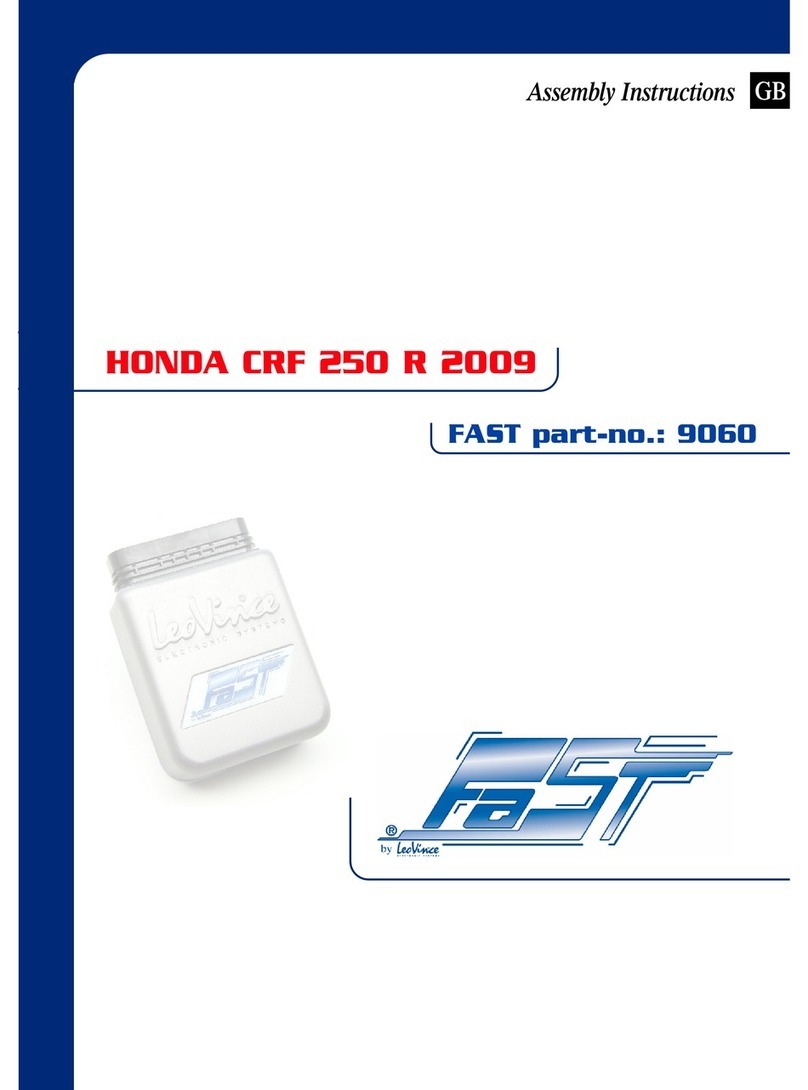
LeoVince
LeoVince 2009 CRF 250 R Assembly instructions
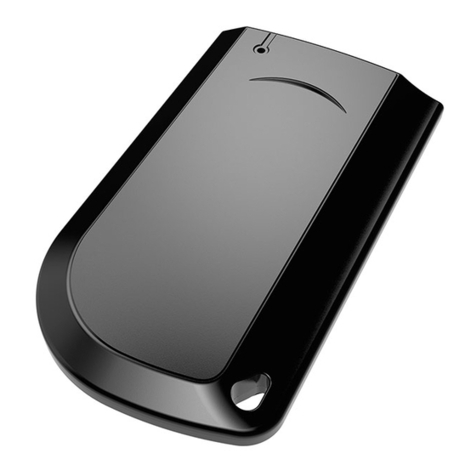
Pandora
Pandora Mini Moto User and installation manual

hepco & becker
hepco & becker Easyrack Mounting instructions
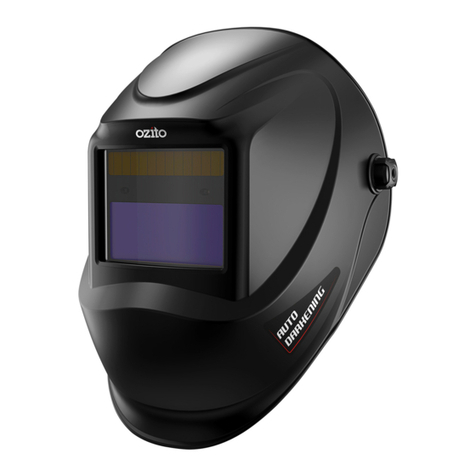
Ozito
Ozito SHADE 11 instruction manual

HealTech Electronics
HealTech Electronics QuickShifter easy Supplementary manual
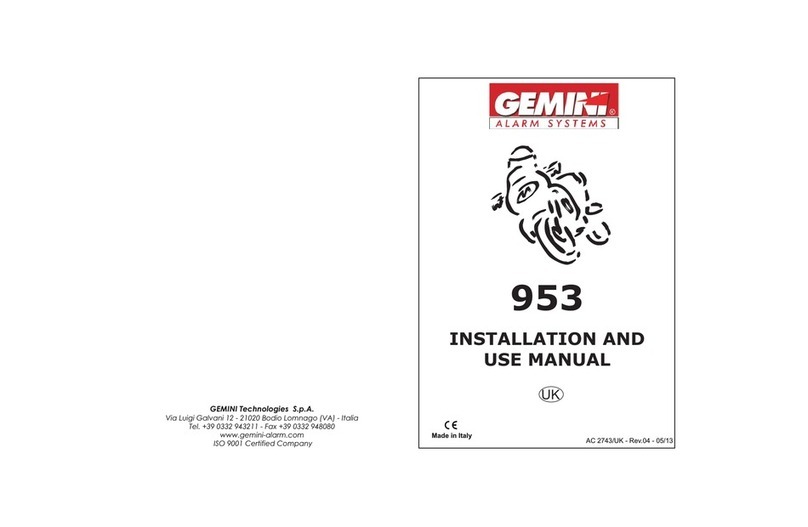
Gemini
Gemini 953 Installation and use manual
